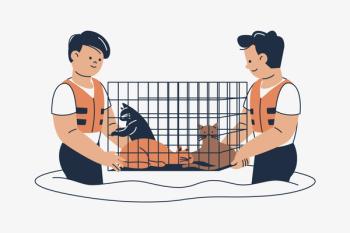
AAHA sounds off on feral cat study
Lincoln, Neb. - A new report advocating shooting as a suitable means of population control for feral cats is drawing the ire of several groups, including the American Animal Hospital Association (AAHA).
LINCOLN, NEB. — A new report advocating shooting as a suitable means of population control for feral cats is drawing the ire of several groups, including the American Animal Hospital Association (AAHA).
"Although AAHA recognizes the need to address the issue of feral cats, it believes sections within the UNL report can lead to unnecessary pain and suffering of cats," AAHA says in a statement on the report, titled "Feral Cats and their Management," from the University of Nebraska, Lincoln (UNL).
The study—authored by Aaron Hildreth, project technician at UNL's School of Natural Resources; Stephen Vantassel wildlife damage project coordinator, and Scott Hygnstrom, vertebrate pest specialist—details the negative environmental impact the nation's roughly 60 million feral cats can cause. Feral cats are responsible for the extinction of at least 33 bird species, killing an estimated 480 million birds each year with an economic impact of $17 billion based on dollars spent on bird-watching, bird-rearing and human bird-hunting, according to the study.
"The lack of clear-cut responsibility and jurisdiction complicates the management of feral cats," the study says, stating that feral cats are not protected under wildlife laws in Nebraska.
The most effective methods of control, the study says, are non-lethal methods like habitat modification, frightening devices and fertility control. However, the authors say lethal methods, like euthanasia, kill trapping and shooting also should be considered.
"These methods provide an immediate reduction in the population and may be necessary when feral cats are overabundant and causing significant negative impacts," the report states. "People who are very sensitive about cats will be opposed to capture and removal and lethal methods of control. Management of feral cats should be discussed in community meetings and decisions should be made based on public sentiment and sound research-based information."
The study describe various control methods, including what types of shotguns to use and where to aim.
"It is shocking that a university publication would advocate shooting and the use of leg-hold traps as acceptable methods to control/exterminate free-roaming cats," AAHA adds. "These methods are indiscriminate, inhumane and are unacceptable for the purpose of cat population management."
The study was condemned by Alley Cat Allies, a national stray and feral cat advocacy group, which says all cats, regardless of whether they are feral or not, are protected under state anti-cruelty laws.
Newsletter
From exam room tips to practice management insights, get trusted veterinary news delivered straight to your inbox—subscribe to dvm360.




